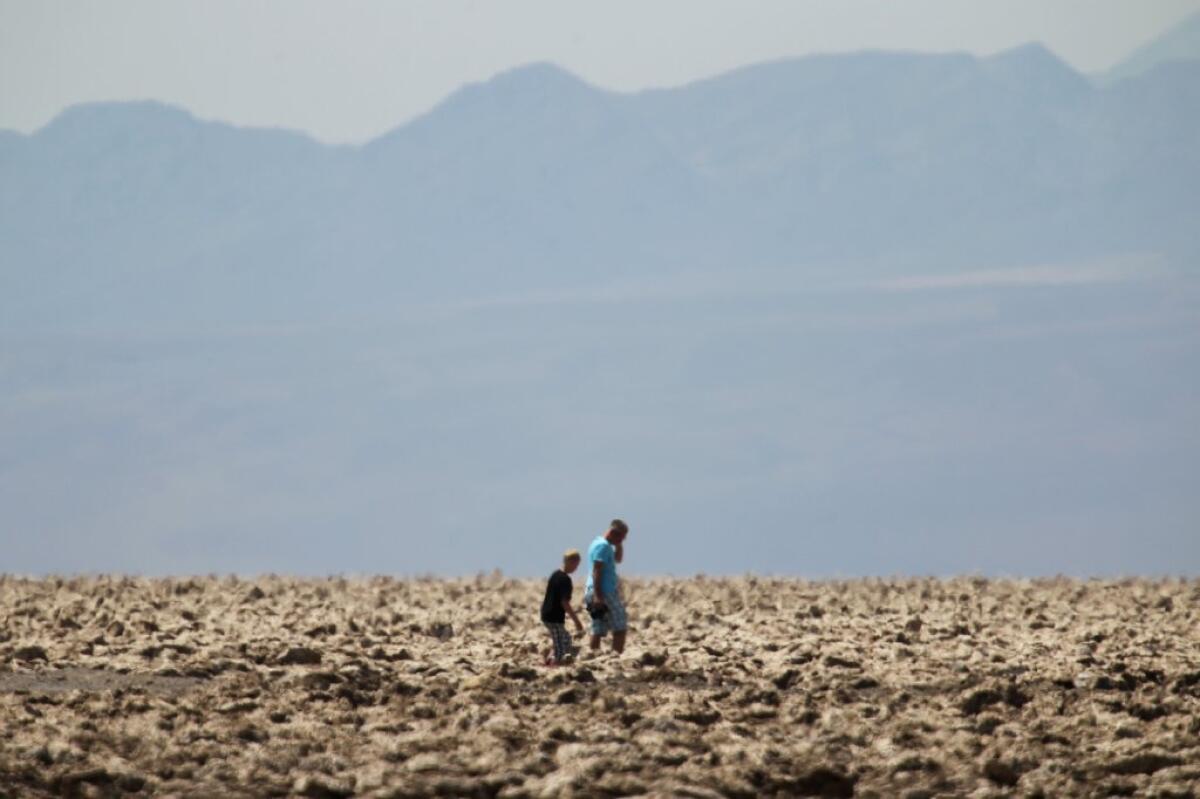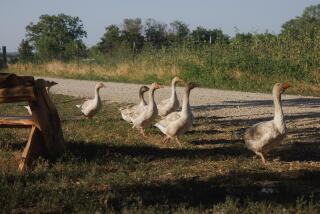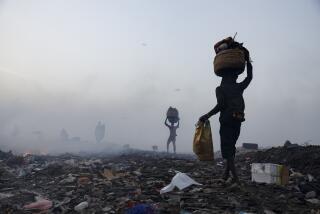Microbes will joust for survival in Earth’s warming climate

The meek shall inherit the Earth, and that may not be a good thing, if the meek are cyanobacteria.
It turns out that the ancient microbes lowest on Earth’s food chain are sensitive sorts. Familiar strains of these organisms that provide “biological services” essential to complex life are about to lose the competition for a viable niche in a world turned warmer and more carbon-rich, according to two new studies. And the strains poised to dominate in the desert and ocean remain mysterious and largely unstudied.
Arizona State University microbial biologist Ferran Garcia-Pichel found that a poorly understood cyanobacterium strain could push aside a distant cousin in high-desert environments within 50 years, if Earth’s surface temperature continues its steady rise. How well this organism can keep a lid on desert soil and prevent massive dust storms that affect weather and climate remains an open question, according to the study, published last week in the journal Science.
In another study, USC scientists suggest that an equally obscure strain of ocean cyanobacterium is likely to thrive under higher carbon-dioxide conditions predicted later this century. The strain could fertilize the ocean with nitgrogen, which would invigorate the marine food chain, but potentially increase algae blooms linked to fish kills and respiratory problems.
The studies highlight the unpredictable consequences of a global experiment in temperature and carbon-dioxide driven largely by the burning of fossil fuels, according to the scientists.
“Anthropogenic change is driving changes in the diversity down there at the very base of the food web, and it’s happening in the desert and we think it’s happening in the ocean as well,” said USC marine biologist David A. Hutchins, whose work on ocean cyanobacteria was published Sunday in Nature Geoscience.
Climate change reports tend to prognosticate about charismatic fauna such as the polar bear. But most are oddly silent about the invisible world that is the most ancient form of life on Earth. Marine cyanobacteria, in fact, created the conditions for higher life forms — oxygen in the atmosphere — through billions of years of photosynthesis. Strains of it are responsible for the hydrocarbons humans are tapping and burning — oil, natural gas, and coal — driving up carbon dioxide levels in the atmosphere.
“There’s plenty of studies that show that microbial activity will change with climate change,” said Garcia-Pichel. “But the fact that the distribution — where particular organisms are found — may also change with warming: There’s nothing like that; there’s not a single case of a microbe that’s mentioned in those reviews.”
In the desert, cyanobacteria form a sticky lattice that holds dust, sand and other organisms in a stable crust. But human activity destroys that fragile cap, allowing tons of dust to whirl into the atmosphere, creating choking storms and causing shifts in the movement of large air masses. Desert dust falling to the ground also has been implicated in speeding snow melt in the Rocky Mountains.
“The dust that everybody is worried about is coming from deserts and these (cyanobacteria) are the guys that are keeping them from blowing,” said Jayne Belnap, a U.S. Geological Survey biologist who has studied the soils for decades, but was not involved in Garcia-Pichel’s work. “That’s going to become more and more of an issue as things get warmer and more disturbed.”
Garcia-Pichel was only interested in examininging the diversity and ranges of cyanobacteria when he began his field work. “This was not a climate change study,” said Garcia-Pichel. “It sort of hit us.”
Garcia-Pichel’s team collected samples from varied desert habitats in Oregon, California, Nevada, Arizona, Utah and New Mexico. The researchers found that one well-studied strain dominated in higher-altitude, cooler desert, while a somewhat overlooked strain thrived in warmer, lower arid country.
Analysis suggested this niche separation was due to temperature. So researchers tested cultures under different heat regimes. They found that a rise of four degrees Fahrenheit would overwhelmingly favor the strain that evolved for lower, warmer desert areas, Microcoleus steenstrupii.
The most common and well-studied strain, M. vaginatus, would lose out within 50 years under current climate models. While the two share a generic name and look similar, they are likely from entirely different families, according to Garcia-Pichel.
“We knew it had existed,” Garcia-Pichel said of Microcoleus steenstrupii. “We had seen it in the past, but we didn’t realize how widespread and important it was. When you come to think about it, we don’t really know anything about this new guy. There’s really no studies.”
That’s the problem with strains of Trichodesmium erythraeum and Chrocosphaera wastonii in the ocean, said Hutchins.
Researchers exposed seven isolates of these cyanobacteria — a much wider sampling than studied previously — to carbon-dioxide conditions ranging from the lows of the last ice age to highs predicted by the end of this century.
“Sure enough, as CO2 changes, you get a big change in the dominance and diversity of these organisms,” Hutchins said.
The dominant strains also make more nitrogen available to other organisms, the study found. We could, in other words, be fertilizing the ocean.
“If you have more nitrogen available, potentially that could support more productive ocean food chains, including ones that lead up to things that people care about, like fisheries,” said Hutchins.
What kind of changes such a shift would spark in the diversity of species higher in the food chain is unclear, and complicated by many other factors that would need further study, Hutchins said.
“It’s pretty simplistic to say, ‘Yes, we’re going to just get more fish out of it; it’s a great thing,’ ” Hutchins said. “Creating unknown shifts in how whole ecosystems work is a pretty risky thing. We’re kind of doing an experiment with the whole Earth by putting all this carbon dioxide out.”
Previous research has identified a potent toxin in Trichodesmium, which is linked to fish-killing “red tides” that plague the Gulf of Mexico and tropical waters. The air- and food-borne toxin causes non-fatal respiratory problems and flu-like symptoms in humans, according to studies.
Andreas Andersson, a geoscientist at Scripps Institution of Oceanography at UC San Diego, cautioned that predicting shifts in populations of microbes is complicated by many factors beyond carbon dioxide.
“It is not guaranteed that the current results would be the same under different light, iron and phosphorus conditions, which are obviously aspects that need to be tested in future experiments,” Andersson said.
Garcia-Pichel and Hutchins likewise noted that there isn’t enough evidence yet to tell whether the net effect of such microbial shifts would be beneficial or detrimental. And both studies also demonstrate a latent diversity that perhaps was not appreciated.
“I think the story to some extent contains a kernel of hope in that it tells us that there’s enough functional diversity out there in the ocean for these essential biological services that the ocean provides to adapt to the changes that we’re making in the ocean by adding all this carbon dioxide,” Hutchins said.
“I would worry about other factors that destroy the crust that are much more important and real and present and a prediction that may happen in 50 years,” Garcia-Pichel said. “And those are happening right now. Outdoor activities by humans actually destroy the crust in the desert every day … So there’s a lot of destruction going on in the natural soil surfaces due to human impact other than climate change.”







